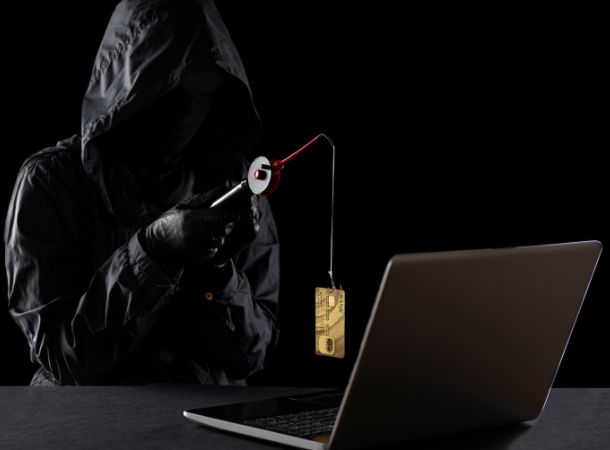Introduction
In the rapidly evolving cybersecurity landscape, one term that has gained notoriety is “phishing.” Phishing is a cyberattack that uses social engineering techniques to manipulate individuals into revealing sensitive information, such as passwords, credit card numbers, or personal data. It’s a prevalent and persistent threat that affects individuals, businesses, and organizations worldwide. This blog post will delve deep into phishing, exploring its various forms, techniques, and preventive measures.
Understanding Phishing
Phishing is a cybercrime that involves luring unsuspecting victims into a trap set by cybercriminals. The primary goal is to steal sensitive information or compromise a system for malicious purposes. The term “phishing” is a play on the word “fishing,” as it involves casting a wide net to catch unsuspecting victims.
Phishing Techniques
Phishing attacks come in various forms, each designed to exploit different vulnerabilities. Here are some standard phishing techniques:
- Email Phishing: This is the most prevalent form of phishing. Attackers send deceptive emails that appear to come from a legitimate source, such as a bank, government agency, or well-known company. These emails often contain links or attachments that, when clicked, lead to malicious websites or download malware onto the victim’s device.
- Spear Phishing: Unlike generic email phishing, spear phishing targets specific individuals or organizations. Attackers gather information about their targets and craft highly personalized and convincing emails. This tactic makes it more challenging for recipients to discern the fraudulent nature of the message.
- Smishing: Short for “SMS phishing,” smishing involves sending phishing messages via SMS or text messages. These messages often contain links to fake websites or request sensitive information through text.
- Vishing: In a vishing attack, scammers use voice communication, typically phone calls, to trick victims into revealing personal information or performing specific actions, such as transferring money.
- Clone Phishing: In clone phishing, attackers create a near-identical copy of a legitimate email or website. They then replace specific elements with malicious ones, such as links to phishing sites. Because it is almost entirely identical to the original email, it can be particularly convincing, as the recipient may think they are interacting with a trusted source.
The Psychology of Phishing
For Phishing to succeed, phishing attacks exploit human psychology. Cybercriminals prey on our trust, fear, curiosity, and urgency. They use tactics like urgency (e.g., “Your account will be suspended unless you act immediately”) and anxiety (e.g., “Your computer is infected; click here to clean it”) to manipulate victims into taking hasty actions.
- Real-World Implications
Phishing attacks have significant real-world consequences, affecting both individuals and organizations. Here are some examples:
- Financial Loss: Victims of phishing attacks can suffer financial losses due to stolen credit card information, unauthorized bank transfers, or fraudulent purchases made in their name.
- Identity Theft: Phishing attacks often result in identity theft, where cybercriminals use stolen information to impersonate their victims for various malicious purposes.
- Data Breaches: When organizations fall victim to phishing attacks, sensitive customer data can be exposed, leading to data breaches that can harm the organization’s reputation and result in legal consequences.
- Malware Infections: Many phishing attacks deliver malware onto the victim’s device, compromising their data and potentially leading to further cyberattacks.
- How to Spot Phishing Attempts
Recognizing phishing attempts is crucial in defending against these cyber threats. Here are some tips to help you identify phishing emails and messages:
- Check the Sender’s Email Address: Examine the sender’s email address closely. Phishing emails often use fake or suspicious addresses that may resemble legitimate ones but have slight variations.
- Be Wary of Unsolicited Emails: Exercise caution if you receive an unexpected email requesting sensitive information or urging you to click on links. Verify the sender’s identity through a trusted source, and when in doubt, call the sender, ensuring you are using the correct, published phone number. When possible, always speak to a known person.
- Look for Spelling and Grammar Errors: Phishing emails often contain spelling and grammar mistakes. Legitimate organizations usually have professional communication. However, note that with the advance of Artificial Intelligence (AI), spelling and grammar may be correct and should not be the sole determining factor of a legitimate email.
- Avoid Clicking on Suspicious Links: Hover over links in emails to see where they lead before clicking. Be cautious of shortened URLs, as they can hide the actual destination.
- Verify Requests for Personal or Financial Information: Legitimate organizations rarely ask for sensitive information via email or text. Contact the organization directly through official channels to confirm the request if in doubt.
- Be Skeptical of Urgency and Fear Tactics: Phishing emails often create a sense of urgency or fear to prompt immediate action. Take a moment to think before responding.
- Protecting Yourself and Your Organization
Preventing phishing attacks requires proactive measures. Here are some steps individuals and organizations can take to protect themselves:
- Security Awareness Training: Organizations should provide cybersecurity training to employees to help them recognize and respond to phishing attempts effectively.
- Use Email Filters: Employ email filtering solutions that can detect and quarantine phishing emails before they reach users’ inboxes.
- Multi-Factor Authentication (MFA): Enable MFA wherever possible. Even if attackers obtain your password, MFA adds an additional layer of security by requiring a second form of verification.
- Keep Software Up to Date: Regularly update operating systems, web browsers, and antivirus software to patch vulnerabilities that attackers may exploit.
- Secure Websites: Implement HTTPS on your websites and encourage users to verify the website’s authenticity by checking for the padlock symbol in the address bar.
- Encourage Reporting: Create a culture where employees feel comfortable reporting suspected phishing attempts. Prompt reporting can help in early detection and mitigation.
- Implement Email Authentication: Use protocols like SPF, DKIM, and DMARC to prevent email spoofing and phishing.
Conclusion
Phishing remains a pervasive threat in the world of cybersecurity. Its success relies on manipulating human psychology and exploiting vulnerabilities in our digital interactions. However, by understanding the various phishing techniques, recognizing the signs of phishing attempts, and implementing preventive measures, individuals and organizations can significantly reduce their risk of falling victim to these cyberattacks.
Remember, the best defense against phishing is a combination of robust security practices, user education, and technology to detect and block phishing attempts. By staying informed and vigilant, we can all play a part in minimizing the impact of phishing on our digital lives.
Share:




Leave A Comment